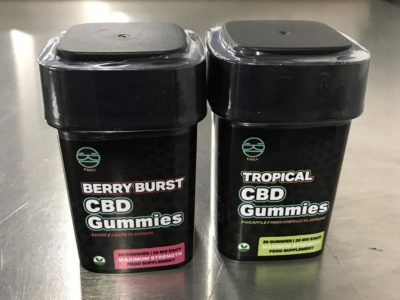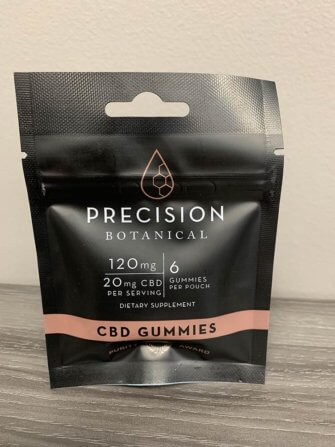 A long-familiar confectionary presence, gummy bears, have satisfied both sweet and sour candy cravings for decades.
A long-familiar confectionary presence, gummy bears, have satisfied both sweet and sour candy cravings for decades.
Their recognizable form tempts children of all ages, adding to their appeal. So much so that gummy bears are no longer reserved for the candy aisle.
In addition to filling bags and bottles with chewy treats, gummy bears have also become a common delivery system for vitamins and health supplements, including bears infused with cannabidiol (CBD).
Enduring Gummy Bear Traditions
Gummy bears have a devoted following. Though they are most often associated with German origins, the candy may have roots in Turkish and Japanese confections. The treats draw from an age-old tradition of cooking fruit with sugar to extend the harvest beyond fresh fruit spoilage. Early Turkish and Japanese derivations were more commonly produced using rice and corn, so Haribo founder Hans Riegel’s gelatin-based bear-shaped versions improved upon the originals.
Gumdrops, Jujubes, and Chuckles predate Riegel’s gummy bear confections, appearing as early as 1909. Though popular, earlier candies didn’t include the bear appeal associated with Riegel’s gummies, so his unique spin propelled popularity among German children, embracing the “dancing bears.” Originally established in the 1920s, Haribo grew then suffered through WWII before Riegel’s sons revived the brand. The rest is history; since the 1980s, competing US makers market gummy bears alongside the pioneering German brand, which also produces gummy bears stateside.
Gummy bears are typically comprised of gelatin, sugar, starch, flavoring, glucose syrup, and citric acid; pectin versions are also available, catering to vegan consumers. The production process employs a starch mogul approach, using stamp trays in bear shapes. The trays, made from a master mold, are first lined with powdered starch, before being filled with liquid, colored, flavored gummy formulas.
The small fruit candies consumers have come to know are approximately 2 centimeters long, though commercial examples include a wide assortment of gummy (gummi) shapes and sizes. To create the hallmark look, the face of the molded trays is fashioned in a bear shape, while the back of the individual candies remain flat. After filling with warm liquid, the trays are allowed to cool overnight, resulting in the rubbery yet appealing texture distinguishing gummy bears from other chewable candies.
Flexible Functions Drive Gummy Bear Sales
Gummy vitamins have become mainstays in the market, offering multi-vitamin formulas, as well as gummy bears containing a single vitamin, such as C or D. Calcium gummies represent another supplement segment, complementing a wide variety of gummy bear vitamin alternatives.
Children may shy away from tablets and capsules, reducing access to recommended vitamins. Gummies, particularly kid-appeal ones, have a better chance of landing nutrients than traditional pills. Children’s chewable supplements shaped like bears are an easy sell, relying on the gummies’ familiar shape and size to get kids’ attention. In addition to kids reluctant to swallow pills, gummy bear vitamins can help children
- experiencing nutrient deficiencies,
- with absorption issues,
- requiring increased amounts of nutrients, for one reason, or another,
- known as “picky eaters,” which may reduce their natural intake of vitamins
For adults requiring supplemental vitamins, gummy bears reduce a phenomenon referred to as “pill fatigue.” They taste good, so adults are just as drawn to chewable vitamins as their children are, essentially green-lighting a piece of candy for its supplemental nutritional value. Stored properly, the flexible, chewable candies stay fresh for months, though gummy bears incorporating supplements may have expiration dates.
The ever-increasing sales growth of this non-traditional pill form naturally drives more demand for gummy bear packaging in the CPG market.
Consumers Embrace CBD Infused Gummy Bears
CBD infused gummy bears have helped propel the cannabis-derived additive to new heights in mainstream health and wellness circles. Now present in everything from cosmetics to chewable gummies, CBD has captured public attention for its potential benefits. The substance is derived from hemp strains of the cannabis plant and is believed to be beneficial for treating various ailments.
 Though science is yet inconclusive about the benefits of CBD, users point to properties that may help manage conditions, such as:
Though science is yet inconclusive about the benefits of CBD, users point to properties that may help manage conditions, such as:
- Insomnia – Some research indicates CBD is beneficial in helping insomniacs fall asleep and even wake up.
- Epilepsy – CBD has been linked to seizure reduction in cases of childhood epilepsy. An FDA approved CBD treatment leads the way in drug innovation, incorporating the benefits of CBD.
- Pain – CBD may relieve pain for chronic sufferers.
- Inflammation
- Anxiety and Depression – It is thought anxiety sufferers may find relief in CBD gummy bears and other supplements containing the cannabis-derived compound.
- Heart Health – CBD has shown promise in promoting heart health in limited studies.
- Skin Conditions – Acne sufferers have experienced symptom reduction tied to CBD use.
- Digestive Issues
- Arthritis – Topical CBD applications have been shown to reduce inflammation caused by arthritis.
Relaxed marijuana laws and increased public awareness about cannabis/hemp products have given sustained momentum to CBD sales trends. The compound is blended for topical use and formed into gummies for consumption. Companies such as Not Pot utilize the recognizable gummy bear shape for infused chewables, sold in jars.
Hang tags are popular for grocery aisle gummy sales applications and for smaller quantities of bears. Gummies are also wrapped and boxed for health store placement. Glass and plastic jars of all shapes and sizes prepare diverse CBD goods for the market, including clear containers and dark jars used for hemp-infused gummy bears.
First gaining popularity a whimsical yet curiously satisfying confection nearly 100 years ago, gummy bears still have a strong presence in the candy aisle. But the familiar treat has also crossed over into health and wellness markets, including vitamins and supplements. The dancing bear appeal specifically targets kids, in some cases, supporting ease of use and better success rates delivering nutrients.
As popular as they are with children, gummy bears’ staying power is also an adult phenomenon. From supplemental nutrients to CBD and individual or blended vitamins, the chewable alternatives help adults overcome pill fatigue, offering a flavorful distraction from tablet supplements.
